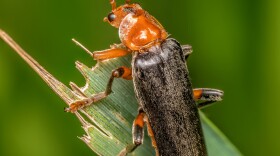A few years ago, while out on a hike to observe insects (of course) we were thrilled to have our first sighting of a Jutta Arctic Butterfly. It appeared to be happily nectaring from some flowers.
But after taking a closer look, we quickly noticed that our friend was not moving. In fact, it was dead. Looking even closer, we saw the reason why: It was in the grasp of a Goldenrod Crab Spider.
Rather than actively hunting or catching their prey in a web like some spiders, Goldenrod Crab Spiders are sit and wait predators, waiting for their next meal to come to them. And as you might guess, good camouflage is important for their hunting success.
But unlike most camouflaged predators, Goldenrod Crab Spiders employ "active camouflage," or the ability to change their camo based on their surroundings.
With flowers being their primary hunting grounds, Goldenrod Crab Spiders have the ability to change their body color from white to yellow to better blend into their flowery environment.
Take goldenrod for example – as a favored yellow flower for hunting, the spiders secrete a liquid yellow pigment into the outer cell layer of their body, slowly changing from white to yellow in as little as 10 days.
If they are spending more time on white flowers, the yellow pigment is simply excreted, turning the spider from yellow to white in as little as 6 days.
With the ability to change color, and incredible patience to wait for an unsuspecting pollinator to approach, Goldenrod Crab Spiders are effective predators of flies, honeybees, bumble bees and other pollinators.
And as we learned, butterflies are occasionally on the menu too.





